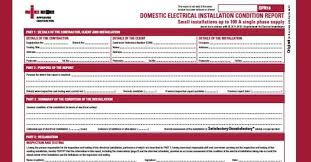A website from scratch is a specially handcrafted website. Thus, building a website from scratch simply means that the website is designed according to the needs of the clients and their specific business requirements with customized solutions.
Websites have become more than just marketing tools for businesses. Nowadays, people can use them for almost anything – from chatting and meeting friends, to transferring information, trading, teaching, and more. There are various website builders that you can use to create simple websites. However, these web builders have many disadvantages. That is why website development from scratch (based on CMS) is highly recommended for business owners or professionals who want to create unique websites for their business, taking into account individual requirements.
SITE FROM ZERO vs SITE DESIGNER
There are many benefits to building a website from scratch in the sense that it is designed in a way that grabs the attention of your visitors and loads faster than a website designed by a website builder. But keep in mind that developing a website from scratch requires a deep knowledge of UI / UX design and technologies such as HTML, CSS, PHP, JS (JavaScript) or JavaScript frameworks (for example, AngularJS ) and a basic understanding of search engine optimization. Therefore, it is highly recommended to hire a professional web developer or website development company if you need a really high quality website that suits your needs and will last for years without additional support costs.
Unlike sites built from scratch, site builders and site templates have a set of built-in features that are more than your site needs. Ultimately, excess functionality negatively affects the performance of your site. If you have a lot of time and want to create web pages or a blog just for your hobby, a website builder can help. For business purposes, in order to get a quality website, it is better to contact a website development company and entrust your project to experts.
Want to create your own WordPress site from scratch? Feel free to contact our team of WordPress website developers .
ADVANTAGES OF CREATING A SITE FROM SCRATCH
- The site will receive a unique, custom UI \ UX design and code (which can significantly improve conversions on the site).
- There is no advertising of third-party services on the site, unlike site builders that add ads to your site.
- The site is hosted on the Internet with its own unique domain name, which allows you to grow your brand.
- Optimized code and the absence of unnecessary scripts, styles means high loading speed.
- The site is easier to set up for search engine optimization (adding tags, managing page structure, etc.)
- Ability to create a simple admin panel to manage content and add new content.
BACKGROUND OF CREATING A SITE FROM SCRATCH
Experience is key to creating an attractive website. Therefore, a developer must have the following minimum skill set before getting started:
- Understanding HTML and PHP
- Skills in CSS and JavaScript
- General understanding of SEO
- Ability to write optimal code
- Working with programs for creating layouts and templates (like Adobe Illustrator, Adobe Photoshop, or Sketch)
- Knowledge of the requirements and features of the latest versions of Google Chrome, Safari, Mozilla Firefox and Microsoft Edge browsers
STEP-BY-STEP INSTRUCTIONS FOR CREATING A SITE FROM SCRATCH
Creativity and professional skills determine the result of website creation. Web developers write website code differently depending on their preferences. Although the methodology may differ, usually the creation of a site involves the following important steps.
Step 1: Choosing a Domain Name
This is an important part of the journey. When choosing your domain name, make sure it matches your business. A domain name that matches your company name raises awareness of your online business and builds your brand. A good SEO professional can make your domain name memorable in order to drive traffic to your website and therefore increase your sales.
Important to remember:
EMD (exact match domain) is the domain that exactly matches the search query. It is mistakenly believed that this has a positive effect on the ranking of the site in the search engines. In fact, this is not the case. In some cases, when the domain name is very long, this can negatively affect search engine optimization and your site will not be able to get into the TOP 10 pages of search results.
Step 2: design the template
A regular site page contains such necessary elements as a header, main body of content, side part of the page and footer.
To do this, a web designer creates page sketches to show the structure of the main blocks. You can use paper and pencil for this, but it is better to use special programs like Axure.
Step 3: create layouts
A web designer creates page layouts using special programs, graphic editors like Photoshop or Sketch . They start by choosing the ideal width and resolution of the future site, and then design each individual section, section and block. Navigation bar, sidebar, logo (use F5 Studio’s logo design service or read the article on how to create a logo: 5 basic logo design principles ), footer, text boxes are created and filled with temporary content, which will subsequently be replaced with the actual one after completion website development.
Particular attention is paid to components that will continue to actively interact with the user. The section for goods, services and blocks containing a call to action, as well as blocks with animation, must be carefully designed.
The finished project file from the graphical editor is cut into small fragments, which are transferred to the developers and, finally, exported to the website.
It is important to note that in some cases, the development of more complex web projects requires specialized pages (ordering, shopping cart in online stores, subscribing), in such cases a prototype and design for these pages is also developed.
Step 4: Development of the back-end and front-end of the site
Based on the layout created by a web designer, Front-End developers “animate” the site, creating block by block and page by page.
The site structure previously specified in the project is integrated, graphic and text content is loaded and the first ready-to-use website prototype is prepared.
Front-End
Developers : Front-End Developers manage the functionality of a web page, they are primarily responsible for everything that users see after opening a web page. In other words, Front-End Developers are just focusing on the UI and User Experience.
Back-End Developers:
The back-end developers are responsible for the database and virtually the entire process behind the scene that the user cannot see.
Their task is to write codes that allow communication between the site and the server (this is done using technologies such as PHP, NodeJS, MySQL, etc.)
Step 5: testing
Testing by specialists ensures the complete absence of any errors on the site and the site works in accordance with all the requirements described in the customer’s technical specifications.
They also make sure that all pages as intended in the original layout render correctly across all devices and modern browsers.
Step 6: Optimization and Validation
The finished site must be reviewed to ensure that it meets certain regulations and standards. This ensures that web pages are interpreted correctly across devices and browsers. This includes HTML and CSS validation , simple search engine optimization, and cross-browser testing.
How long does it take to build a website from scratch, and what affects the time frame?
Creating a new website from scratch is a laborious process. Always entrust this task to a professional if you need a high-quality website that will recoup all investments and make a profit.
Let’s say everything is in order and an experienced developer is at the helm of your project. How long will you have to wait before you can launch your new website?
Each web developer has its own deadlines
A typical project lasts 4-6 weeks
Web development is a step-by-step process. The customer is usually involved and often has an idea of the site’s readiness. This is what the model timeline might look like for a standard site that has 5-7 pages and is designed from scratch.
- Research phase (3 – 4 days)
This phase of intensive research and planning. Here the developer contacts the customer to create a roadmap for the entire project. Discovery phase activities include, among others, research on target audiences, customer needs, current trends, future expectations, and competitor analysis. At this stage, a sitemap, content structure and project documentation are pre-formed. - Agreement with the customer (2 – 4 days)
The conclusions of the developer at the research stage are transferred to the customer. The customer considers various proposals from the developer on how the project should develop, as well as the expected results. The customer can make his proposals, and after the final version has been agreed, the development of the website begins. - Website design (3 – 6 days)
Website development begins with design work. The project designers bring the idea of the site to life by creating the visual elements of your site. They find ways to ensure that the site meets the tastes and expectations of your customers. At the end of this stage, the web designer presents the website layout to the client. - Design approval (2 – 4 days)
The website layout is presented to the customer. Layouts are similar to what the developers will be working on. They give the client an idea of what the finished website will look like. At this stage, customers can ask for changes to the design, and as soon as the changes are agreed, the project will be transferred to the web developer. It is very important to make all design changes at this stage, because changes in the next stages are additional costs. In some cases, changes at other stages cannot be made and the project must be started over. - Web Development (6-10 days)
Developers create a website based on your approved requirements and layouts. The developers guarantee that the site will be user-friendly and functional on all modern devices and browsers. Upon completion of the development stage, you receive a prototype of your site. - Testing (2 – 4 days) A
prototype site on a test server will help you evaluate how well your site is performing in private. You can even use the test server link to get usability feedback from various people. At this point, you can also ask the developer to make any adjustments you think are necessary to fully optimize your site. Once everything is set up, your site is ready to go. - Website launch (less than one day)
Your website is transferred from the test server and becomes available to everyone on the Internet.
Three main things that affect timing
- Competence of team members – most web development projects are divided into stages, and each of them is assigned to an individual person. The discipline, dedication, qualifications and experience of the person working with a particular stage determine the speed with which this stage will be completed.
- Website size – It goes without saying that a complex website takes longer to build than a simple one. Therefore, if you need a large site with many complex features, be patient, as this can take a long period of time.
- Customer approach – ultimately, it is the customer who determines the speed of work.
Other secondary elements can also come into play when building a website from scratch. However, when a reputable web agency is working on your project, you can be confident that your project will be delivered as planned.
Want to optimize your budget? Choose the Best Web Development Companies in dubai for creating a website at a fixed price website
Conclusion
This article was intended to highlight the benefits that developing a website from scratch can provide. To summarize, while website builders can help create simple sites without the need for IT expertise, they remain limited and not suitable for commercial purposes.
Custom websites are ideal for businesses because they are easy to maintain and contain the features you need to grow your business. As such, the ideal way to create business websites is to create one from scratch, however, this requires some IT knowledge. That is why it is advisable to seek professional advice.
The services of a professional, of course, will cost more at the initial stage. Using a website builder will allow you to launch the site quickly, but then you will need to spend money to improve the site’s functions and, ultimately, pay for the transfer of the site from the builder to another platform. Such a transfer means the cost of developing a site from scratch, plus payment for additional work on the transfer of content and functions.
Ultimately, choose an option based on your goals and expectations.
we also provide Ecommerce Development Company in Dubai
 Universal Bloggers
Universal Bloggers




